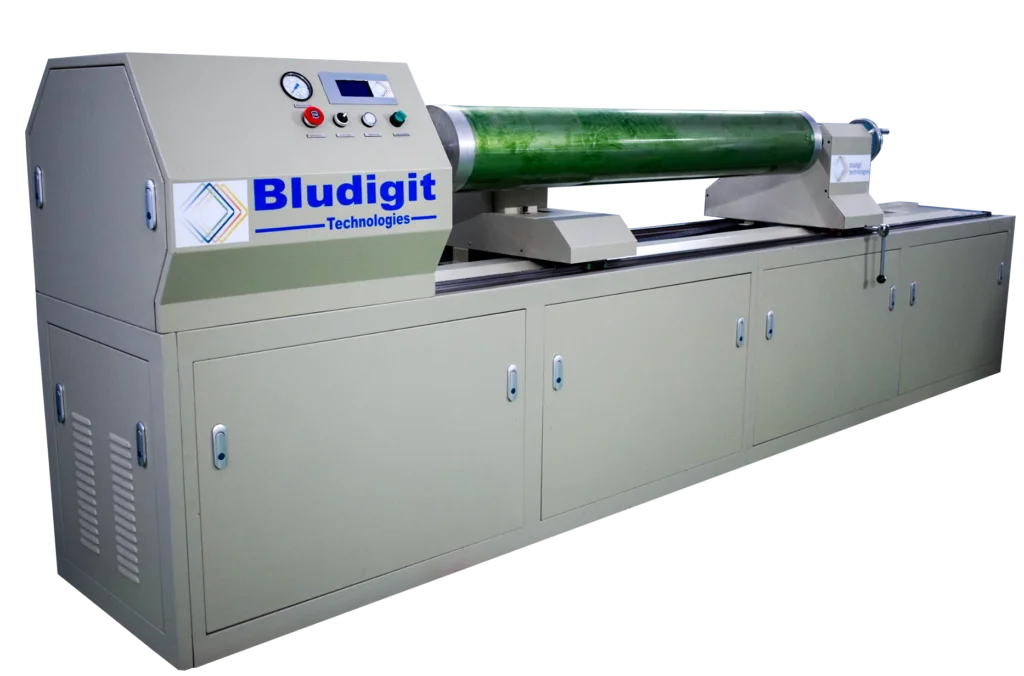Education
Bludigit Technologies is a leading manufacturer of Flat and Rotary Engravers, Digital and Sublimation Printers, Pre and Post-Screen solutions. Apart from dealing in these machines, we also provide spare parts for all our printing and engraving machines. Supporting services which enrich our customer experience includes: machinery setups and training sessions which aim at providing in-depth knowledge about our machinery.
As a leading manufacturer of Engraving, and Printing machinery used in the textile industry, our dedication to providing effective machinery has led us to help manufacturers invest in high-output machinery for the purpose of clothing and textile production.

Process Involved In Maintaining Flat Screens
The process begins with cleaning the frames to assure removal of grease or rust. It helps roughen the surface of the screen frame to assist in bonding.
After cleaning a thin layer of glue can be applied to the cleaned frame. Once this is completed the frame can be stored in a clean area.
Now the frames are to be stretched apart to adjust the mesh and increase the tension.
Leave the mesh for a resting time of 15 minutes. After this the mesh has correct tension and glue can be applied to it. Leave it to dry now.
Degreasing and cleaning is required to achieve a good adhesion from the photo emulsion to the mesh.
Mix the emulsion and allow it to rest. 1-2 coatings should be done so that any design can be used.
The screen should be tried in a horizontal position and temperature must nor exceed 30℃.
The design is exposed directly onto the screen. The emulsion which is UV sensitive gets hard by exposion with UltraViolet Light.
The explosion time depends on: coating thickness, design, and light source intensity. Keep trying new time periods to discover which is the best time amount needed.
Wet the screen and provide some time to let the emulsion swell. Using water, rinse well until all details are clearly seen.
At a temperature of 50℃ or room temperature, dry the screen under the sun in a horizontal position to get best results.
Before the next step, you can retouch the screen with unsensitized Emulsion.
Once the screen is dry, Hardener must be applied on both sides of the screen. The hardener will make the Emulsion resistant to solvents and chemicals.
Hardener needs to be applied for a reaction time of 20-30 minutes before the screen can be called Heat Cured.
For high Chemical Resistance, the screen should be cured at 60℃ for 1 hour. Instead, you can leave it at room temperature for 20 hours.
This is the final check to see for any damage to the Photo Emulsion. Final retouching can be done using Retouching Lacquers.

